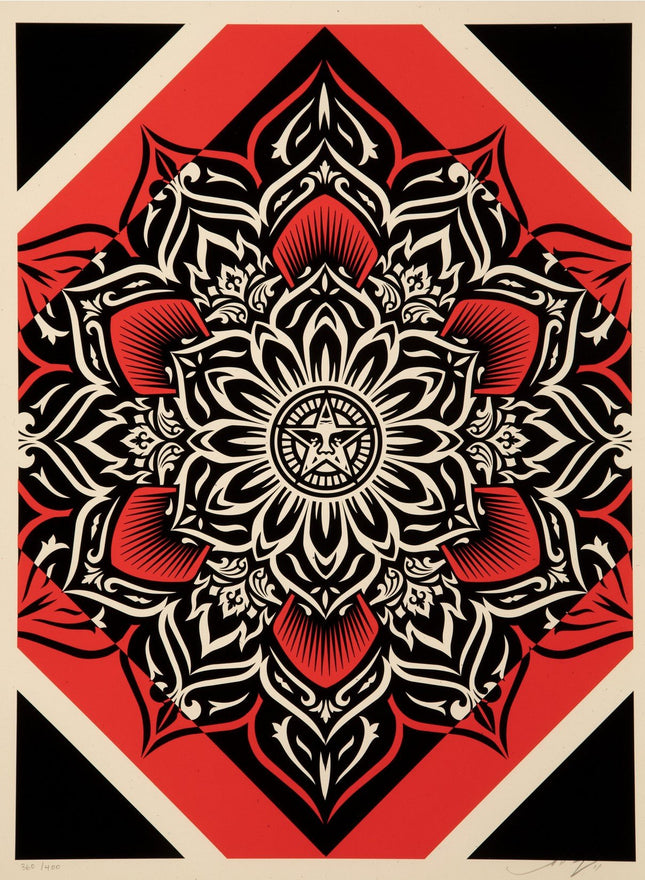
Mandala, a Sanskrit term that means "circle", has been a sacred concept in Hinduism and Buddhism for centuries. With intricate patterns and symmetrical designs, Mandalas are generally considered as a representation of the universe and a spiritual guidance tool, aiding in meditation and trance induction. In the modern context, this ancient art form has permeated into contemporary culture, influencing pop art, street art, and graffiti. When Pop Art emerged in the mid-1950s, it sought to blur the boundaries between “high art” and “low culture.” It did so by borrowing elements from popular culture, media, and an array of other resources. Interestingly, Mandala, despite being an ancient concept, found its place within this movement. Artists like Andy Warhol and others started to experiment with bright colors and repeating patterns that bore a resemblance to the traditional Mandala designs. Incorporating Mandala patterns and designs into pop art brought a new dimension to the movement. The bold colors and intricate patterns of Mandalas infused a spiritual and contemplative aspect into pop art, which was otherwise known for its critique and parody of popular culture. As street art started to gain momentum in the late 20th century, the Mandala found yet another avenue to thrive. Street art, being a more democratic and accessible form of expression compared to traditional art, welcomed various influences. Graffiti artists often combine Mandala’s symmetrical designs with urban elements to create murals that are not only visually arresting but also carry deeper meanings. By painting Mandalas on public spaces such as walls and pavements, street artists provide a visual treat and often a meditative experience to the passersby, while at the same time commenting on societal issues and human experiences. In graffiti art, which is often considered as a subcategory of street art, Mandala elements can be frequently encountered. Graffiti art, known for its rebellious and subversive nature, uses the Mandala in a way that both respects its origins and infuses it with a new life. The intricate patterns and detailed work of Mandalas in graffiti can be seen as an act of dedication and a contrast to the fast-paced, transient nature of modern urban life. Through the use of Mandalas, graffiti artists are able to bring an element of spirituality and contemplation to the otherwise chaotic and unregulated art form. In contemporary settings, the Mandala's role has been transformed; from a sacred concept to an artistic element that speaks to the masses. Its intricate designs serve as a canvas on which pop artists, street artists, and graffiti artists alike can showcase their creativity while connecting with a broader audience. Through the Mandala, these art forms are able to bring forth a unique blend of spirituality and modernism that is reflective of the diverse and evolving nature of contemporary culture. The Mandala’s historical and spiritual significance, combined with its aesthetic appeal, makes it a versatile and enduring element in the ever-evolving landscape of art.

